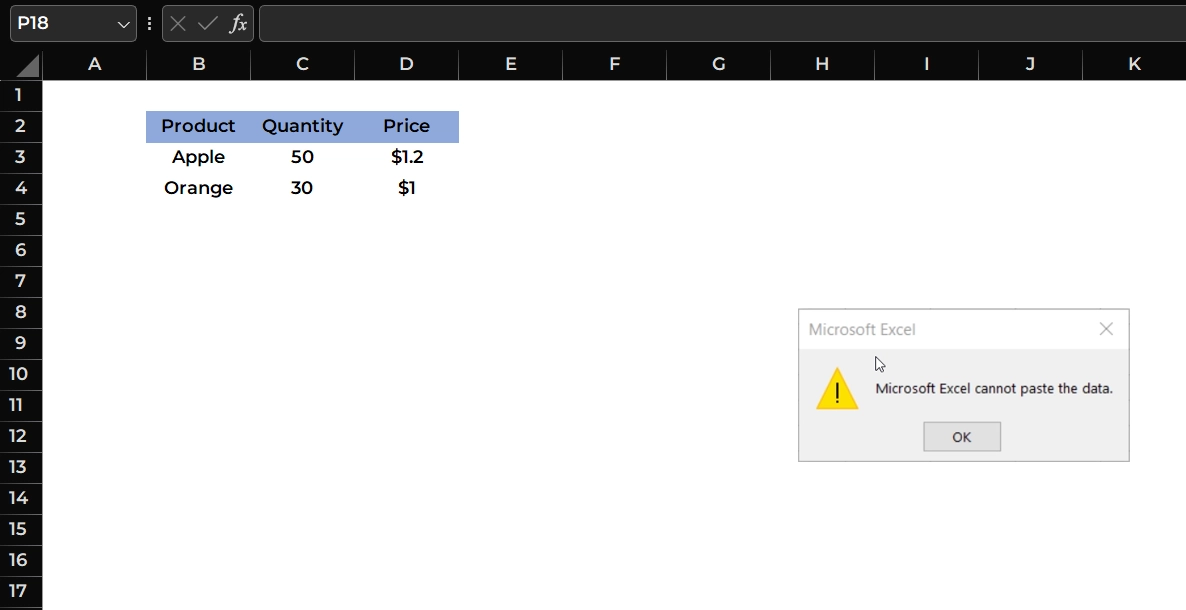Discover the magic of Typescript
Typescript is the magic wand for JavaScript development when it comes to developer confidence, scalability, and expressiveness. Building robust web applications today requires better tooling and runtime safety. This article will introduce you to the powerful features of Typescript, from basic concepts to advanced type manipulation techniques that can enhance your code quality and expressiveness. Why Typescript? Let’s be honest, Javascript is powerful but it doesn't scale well by default. As applications grow, dynamic typing can become a limitation. Typescript gives us: Predictability: Catching bugs at compile time before they reach users. Tooling superpowers: From autocomplete to inline documentation. Team confidence: A shared language to describe shape and intent. Typescript is not here to replace Javascript. It compiles to it, so you can adopt it incrementally. Typescript vs Javascript Feature Javascript Typescript Typing Dynamic Static (with inference) Tooling Limited Rich (IntelliSense, refactoring) Maintainability Can become messy Easier to scale Learning Curve Easy Steeper, but rewarding Javascript gives you flexibility. Typescript gives you confidence. Getting started with Typescript You can start with a simple install: npm install -g typescript Create a config file: tsc --init Enable strict mode. It’s worth it. Typescript fundamentals Type annotations & inference let name: string = "Soumaya"; let age = 33; // inferred as number Basic types string, number, boolean: Primitive data types. Arrays: string[] or Array — a list of items of a single type. Tuples: [string, number] — a fixed-size array with defined types per index. Enums: For named constants with auto-incrementing values or custom assignments. enum Direction { Up, Down, Left, Right } Special types you should know any: Turns off type checking. Avoid unless necessary. unknown: Like any but requires type checking before usage. never: A type that never occurs. Used for functions that throw or never return. Union & intersection types Union let input: string | number; Represents a variable that can be one of several types. Intersection type Admin = { role: string }; type User = { name: string }; type AdminUser = Admin & User; Combines multiple types into one. Type guards function printId(id: string | number) { if (typeof id === 'string') { console.log(id.toUpperCase()); } else { console.log(id.toFixed(2)); } } Type guards are your runtime safety net. They help Typescript narrow types dynamically. Interfaces vs type aliases Use interface when extending shapes. Interfaces are great for object structures. Use type when composing types, unions, or template literals. interface Animal { name: string; } type Dog = Animal & { bark: () => void }; Generics Generics provide a way to write flexible, reusable functions and types that still enforce strong typing. function identity(value: T): T { return value; } T is a type variable. It makes the function reusable for any type. Used widely in utility functions, libraries, and components. Built-in utility types Partial – All properties of T become optional. Useful for update operations. Readonly – Prevents modification of T's properties. Pick – Select a subset of T’s properties. Omit – Exclude some properties from T. Record – Creates a type with keys K and values of type T. Example type User = { id: number; name: string; email: string }; type Preview = Pick; Preview is a lighter version of User containing only id and name. Branded types Branded types add a unique signature to otherwise compatible types, helping prevent accidental mix-ups when different types share the same structure. type UserId = string & { readonly brand: unique symbol }; function createUserId(id: string): UserId { return id as UserId; } Adds a "brand" to make structural types nominal. Prevents accidental mixing of similar-looking types. Discriminated unions Discriminated unions allow safe type narrowing based on a common property, typically kind. type Shape = | { kind: 'circle'; radius: number } | { kind: 'square'; side: number }; function area(shape: Shape) { switch (shape.kind) { case 'circle': return Math.PI * shape.radius ** 2; case 'square': return shape.side ** 2; } } Each shape type is distinguished by a kind field. Template literal types Template literal types allow you to construct string-like types using patterns. type Route = `/${string}`; Creates types from string patterns. Useful for route matching or string constraints. Conditional types & infer Conditional types

Typescript is the magic wand for JavaScript development when it comes to developer confidence, scalability, and expressiveness. Building robust web applications today requires better tooling and runtime safety.
This article will introduce you to the powerful features of Typescript, from basic concepts to advanced type manipulation techniques that can enhance your code quality and expressiveness.
Why Typescript?
Let’s be honest, Javascript is powerful but it doesn't scale well by default. As applications grow, dynamic typing can become a limitation. Typescript gives us:
- Predictability: Catching bugs at compile time before they reach users.
- Tooling superpowers: From autocomplete to inline documentation.
- Team confidence: A shared language to describe shape and intent.
Typescript is not here to replace Javascript. It compiles to it, so you can adopt it incrementally.
Typescript vs Javascript
| Feature | Javascript | Typescript |
|---|---|---|
| Typing | Dynamic | Static (with inference) |
| Tooling | Limited | Rich (IntelliSense, refactoring) |
| Maintainability | Can become messy | Easier to scale |
| Learning Curve | Easy | Steeper, but rewarding |
Javascript gives you flexibility. Typescript gives you confidence.
Getting started with Typescript
You can start with a simple install:
npm install -g typescript
Create a config file:
tsc --init
Enable strict mode. It’s worth it.
Typescript fundamentals
Type annotations & inference
let name: string = "Soumaya";
let age = 33; // inferred as number
Basic types
-
string,number,boolean: Primitive data types. - Arrays:
string[]orArray— a list of items of a single type. - Tuples:
[string, number]— a fixed-size array with defined types per index. - Enums: For named constants with auto-incrementing values or custom assignments.
enum Direction {
Up,
Down,
Left,
Right
}
Special types you should know
-
any: Turns off type checking. Avoid unless necessary. -
unknown: Likeanybut requires type checking before usage. -
never: A type that never occurs. Used for functions that throw or never return.
Union & intersection types
Union
let input: string | number;
Represents a variable that can be one of several types.
Intersection
type Admin = { role: string };
type User = { name: string };
type AdminUser = Admin & User;
Combines multiple types into one.
Type guards
function printId(id: string | number) {
if (typeof id === 'string') {
console.log(id.toUpperCase());
} else {
console.log(id.toFixed(2));
}
}
Type guards are your runtime safety net. They help Typescript narrow types dynamically.
Interfaces vs type aliases
Use interface when extending shapes. Interfaces are great for object structures.
Use type when composing types, unions, or template literals.
interface Animal {
name: string;
}
type Dog = Animal & { bark: () => void };
Generics
Generics provide a way to write flexible, reusable functions and types that still enforce strong typing.
function identity<T>(value: T): T {
return value;
}
-
Tis a type variable. It makes the function reusable for any type. - Used widely in utility functions, libraries, and components.
Built-in utility types
-
Partial– All properties ofTbecome optional. Useful forupdateoperations. -
Readonly– Prevents modification ofT's properties. -
Pick– Select a subset ofT’s properties. -
Omit– Exclude some properties fromT. -
Record– Creates a type with keysKand values of typeT.
Example
type User = { id: number; name: string; email: string };
type Preview = Pick<User, "id" | "name">;
Preview is a lighter version of User containing only id and name.
Branded types
Branded types add a unique signature to otherwise compatible types, helping prevent accidental mix-ups when different types share the same structure.
type UserId = string & { readonly brand: unique symbol };
function createUserId(id: string): UserId {
return id as UserId;
}
Adds a "brand" to make structural types nominal. Prevents accidental mixing of similar-looking types.
Discriminated unions
Discriminated unions allow safe type narrowing based on a common property, typically kind.
type Shape =
| { kind: 'circle'; radius: number }
| { kind: 'square'; side: number };
function area(shape: Shape) {
switch (shape.kind) {
case 'circle': return Math.PI * shape.radius ** 2;
case 'square': return shape.side ** 2;
}
}
Each shape type is distinguished by a kind field.
Template literal types
Template literal types allow you to construct string-like types using patterns.
type Route = `/${string}`;
Creates types from string patterns. Useful for route matching or string constraints.
Conditional types & infer
Conditional types use the ternary syntax to express type logic. Combined with infer, you can extract information from other types.
type Return<T> = T extends (...args: any[]) => infer R ? R : never;
Extracts the return type R from a function T.
Variadic tuple types
Variadic tuple types enable manipulation of tuples by adding or spreading elements dynamically. This is powerful for function arguments and reusable tuple templates.
type AppendNumber<T extends unknown[]> = [...T, number];
Allows dynamic extension of tuples. Great for typing argument lists.
Recursive types
Recursive types reference themselves to represent nested structures. They're key for typing data like trees or JSON-like data.
type Tree<T> = {
value: T;
children?: Tree<T>[];
};
Allows types to reference themselves. Useful for representing nested data structures.
Conclusion
Typescript is more than just type safety. It’s about improving the developer experience, writing expressive code, and building scalable applications. Once you go beyond the basics, you uncover an elegant type system capable of modeling complex behaviors and constraints.
TypeScript offers a comprehensive toolkit to create code that is cleaner, safer, and smarter, from encoding logic with conditional types to inferring return values.
Mastering Typescript opens up new levels of control and clarity in your code, whether you're defining APIs, transforming data structures, or building powerful, reusable components.
The magic is real, and it’s all in the types.








































































































































































![[The AI Show Episode 144]: ChatGPT’s New Memory, Shopify CEO’s Leaked “AI First” Memo, Google Cloud Next Releases, o3 and o4-mini Coming Soon & Llama 4’s Rocky Launch](https://www.marketingaiinstitute.com/hubfs/ep%20144%20cover.png)




































































































































































































![GrandChase tier list of the best characters available [April 2025]](https://media.pocketgamer.com/artwork/na-33057-1637756796/grandchase-ios-android-3rd-anniversary.jpg?#)










































.png?width=1920&height=1920&fit=bounds&quality=70&format=jpg&auto=webp#)

































































































































![Apple M4 13-inch iPad Pro On Sale for $200 Off [Deal]](https://www.iclarified.com/images/news/97056/97056/97056-640.jpg)
![Apple Shares New 'Mac Does That' Ads for MacBook Pro [Video]](https://www.iclarified.com/images/news/97055/97055/97055-640.jpg)






































































































































